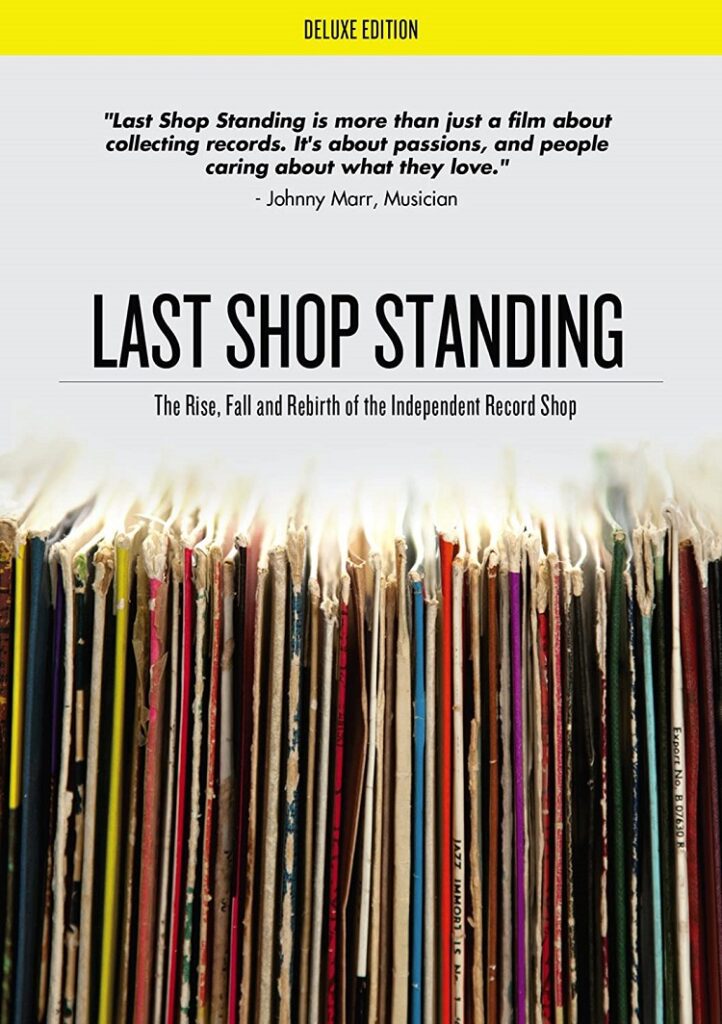
As music sales have declined over the last decade, the retailers hit hardest have been the independent record stores. In the UK alone, where there was once over 2,200 independent stores in the 1980s, that number has dwindled to 269 as of 2009. So what happened? Surely people still like music? Last Shop Standing: The Rise, Fall and Rebirth of the Independent Record Store aims to find out.
Based on the book of the same name by record distributor Graham Jones, Last Shop Standing finds Jones exploring the history of the UK independent record shop. The film is divided into three sections: The Rise, The Fall, and The Rebirth and more than 20 record shop owners, along with musicians such as Paul Weller and Johnny Marr are interviewed.
Not surprisingly, the first wave of rock and roll created a big record-buying explosion, as 78s and 45s made for brisk business, especially from artists such as Elvis Presley. Not everyone was impressed, however. One shop owner recalls her mother saying, “You’ll never sell that. It’s dreadful.” Only they did sell it. It wasn’t unusual for a shop to move six or seven boxes of singles, each containing 25 records, per week.
The second big wave came with the Beatles and record buyers started taking an interest in record players and radios. Stores started featuring listening booths and they became a place for like-minded individuals to hang out. The punk revolution of the 1970s furthered this. The DIY aesthetic where anyone could make a record was tailor-made for the independent store. The record buyers were passionate and so were the sellers. One had to know a lot about music to work in a record shop in those days. Unfortunately those days were short lived.
Graham claims the record labels poured their money, which was flowing in at the time, into the wrong areas. Hype became more important than artist development and a sort of payola took hold, with labels giving away records they wanted to push to shop owners. He believes the labels essentially told people they didn’t want vinyl anymore (when really they did) so they could push CDs and that they grossly underestimated the technological revolution led by sites such as Napster. The big box retailers, or “supermarkets” as they call them here, accounted for 23.6 percent of all CDs sold in 2004. As they sold them as loss leaders, the independent stores couldn’t compete. This was seemingly the final nail in the coffin. Or was it?
Graham’s documentary is ultimately hopeful, pointing out that 18 new stores have opened in the last two years and that events such as Record Store Day, along with a resurgence in vinyl, have led many people back into the record shops. Still, it is shops that do special events, such as having live music or those that sell more than just music, that have the best chance of survival in his estimation.
While the documentary is 50 minutes in length, the DVD contains 74 minutes of bonus features. This includes the official trailer, an extended portion about the rebirth of the independent record store, and extended and new interviews from many of the participants in the film.
To music aficionados, none of this is really news. Record buyers have been lamenting the plight of their beloved shops for many years now. For the average fan who may see no harm in downloading music for free however, this documentary may serve as an eye opener. When a store such as Hudson’s Record & Tape Centre closes after 105 years of business, it is cause to take notice. Last Shop Standing: The Rise, Fall and Rebirth of the Independent Record Store aims to do just that.